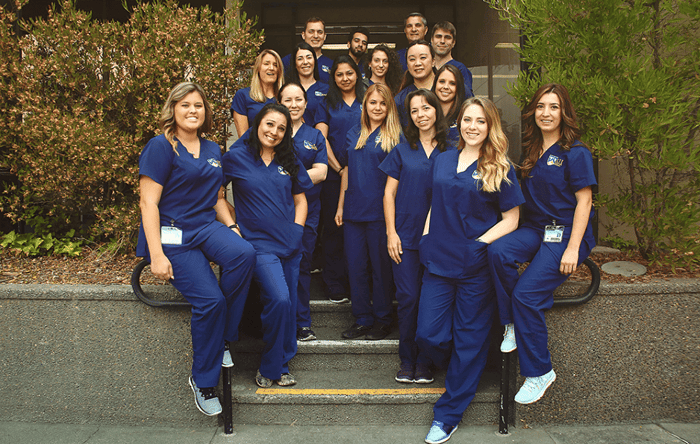Underused strategies like corequisite courses and easy on-ramps help students enroll and graduate, argues the founder of online ed company StraighterLine.
The COVID-19 pandemic created an unprecedented enrollment decrease of over 5%, or almost 1 million students, from fall 2019 to fall 2021 across all institutions and 13% at public two-year colleges. Higher education has faced challenges keeping students who are already enrolled, with the most pronounced declines in retention occurring at community colleges.
Some of these declines are undoubtedly attributable to the abrupt transition from in-person to online learning and the overall uncertainty of the pandemic, but they are also an indicator that many Americans do not believe that enrolling in college will produce a significant return on investment. Strada Education Network research in 2020 found that only half of college students believe their education will be worth what it costs.
For too many students, starting a college degree brings with it a high risk that the return on investment will not pan out. Completing a degree produces a significant return, but starting one produces much less.This reality makes enrolling in higher education especially risky for the roughly half of students who enter higher education unprepared for college-level work. Until recently, most of those students were assigned to developmental courses that often halted their education before it really got started. Millions of students enrolled in, but did not complete, courses that didn’t count for college credit but still took considerable time and money.
As a result, only about one in three students at four-year universities and one in ten students at two-year colleges who are assigned to developmental courses graduate within six and three years, respectively. Graduation rates are also generally lower for students who are underrepresented in postsecondary education. Students who do not succeed are left with zero or even negative return on their investment of money and time.
However, there are ways that colleges can rethink the return on investment of the first-year experience and de-risk college entry, making it more likely that students will see value in the college experience, enroll and be successful.
One counterintuitive strategy is implementing corequisite courses, which allow students who require developmental education to take credit-bearing math and English courses while receiving extra help. Last year, Complete College America used a decade of data to show that these courses are consistently a better bet than traditional developmental courses. For example, a 2019 study at the City University of New York in which statistics students were randomly assigned to remedial or corequisite courses found that the percentage of students who were assigned to corequisite courses and graduated in three years was 40%, nearly double the three-year graduation rate for students who weren’t in corequisites.
At first blush, it’s curious that students in corequisite courses are more successful than their peers in developmental courses because corequisite coursework actually increases the academic rigor for the least-prepared students. But students likely perceive the return on investment differently.
Although the return of a degree may be the same, the financial investment to get the degree is substantially lower for students who start in credit-bearing courses. After Florida passed legislation that made developmental education optional rather than mandatory for certain students, enrollment in credit-bearing English and math courses increased by 22% and 33%, respectively. Yet passing rates barely decreased, which further suggests that students want, and are motivated by, that greater return on investment from credit-bearing courses.
Many colleges are finding ways to decrease risk in the first year by creating low-cost, flexible on-ramps for first-time for stopped-out students. We’re familiar with some of them at StraighterLine because we worked with institutions and systems to build these programs.At Utah State University, for instance, students who don’t meet admissions requirements are given the opportunity to enroll in a new program that provides an alternative pathway to admission. These students take low-cost, credit-bearing courses in math, writing and student success. If they aren’t successful, they have spent less money, have taken on no federal student aid debt, retain their Title IV aid eligibility and do not have a black mark on their transcript.
If Utah State students complete the “earned admissions” courses, they are guaranteed full admission to the university. Initial data shows that the program has helped students enroll at the university who otherwise would have been turned away.
Since its adoption, a total of 162 students have participated. All students who completed the program were admitted to Utah State, and 63% registered for an upcoming term. The program was especially helpful for students who had their education and career plans disrupted during the COVID-19 pandemic and were looking to start the next chapter of their education faster than traditional admissions cycles would allow.
The University of Louisiana System is using a similar model to help learners who have stopped out of college reenroll and complete a degree. Its Compete LA Academy provides low-cost, competency-based courses that allow returning students to restart their education at any time and count those courses toward their degree. It also offers direct student coaching, tutoring and counseling to help students navigate re-enrollment and credit transfer to one of the program’s nine partner universities.
Clearly, corequisite remediation and on-ramps are effective strategies to de-risk college entry and encourage enrollment. But institutions of higher education have been slow to adopt them. In a 2020 survey, just 25% of administrators at public and private institutions said that they had finished implementing reforms to developmental education — and nearly a quarter of those administrators were still using traditional developmental education pathways for at least half of their math courses.
In the face of a pandemic that has hurt learners and decreased access, higher education must find ways to reduce the risk of entry. By lowering the cost and risk of first-year credits, we can drive the return on investment for students even higher. That’s a recipe for helping more students succeed and minimizing the harm to those who don’t.This op-ed was originally published in HigherEd Dive.











